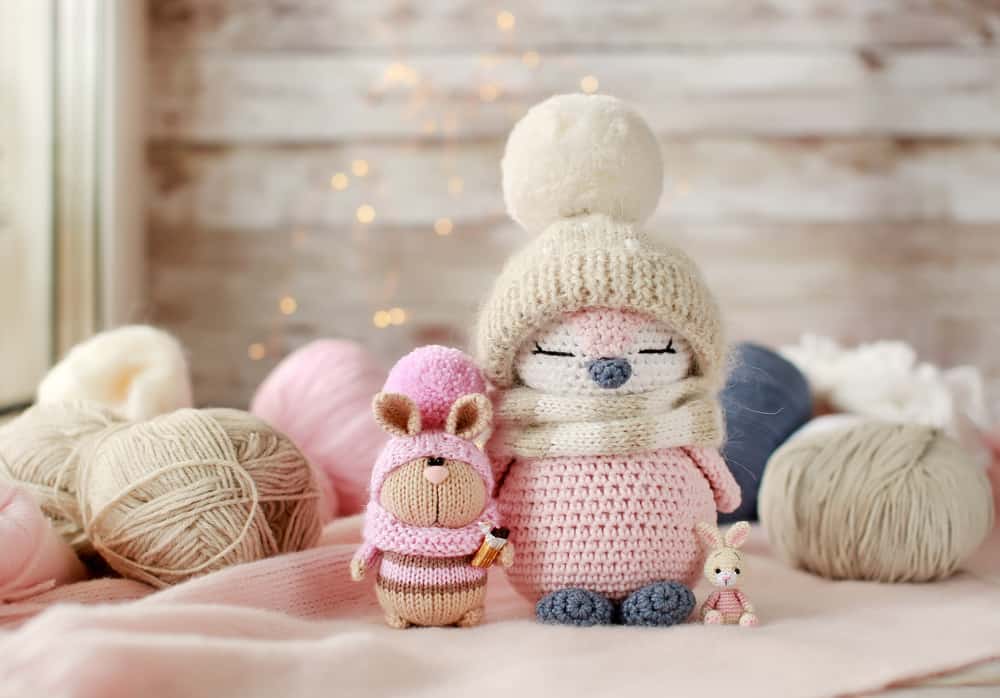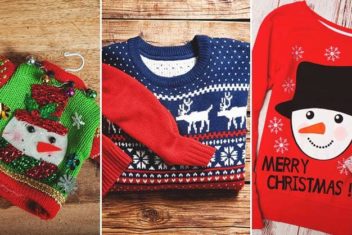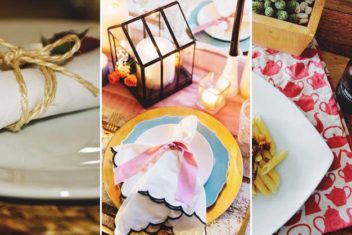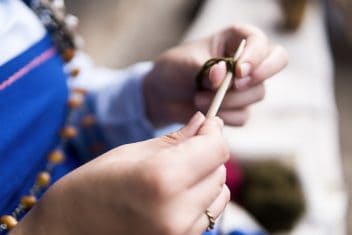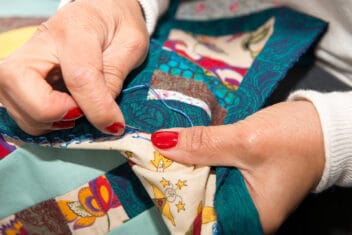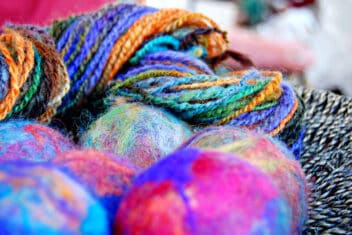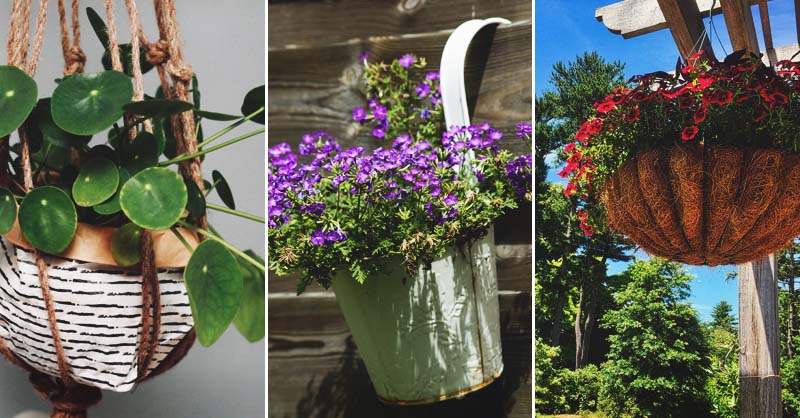Amigurumi is the Japanese art of making crochet animals and toys. The word comes from the words “ami,” which means crocheted or knitted, and “nuigurumi,” which means stuffed doll or toy.
Amigurumi started in the 1950s in Japan, but it has become a hit worldwide with the popularity of Kawaii brand products and the rise in Japanese anime, cosplay, and gaming.
The best thing about amigurumi is that you don’t need many supplies. As long as you have yarn, a crochet hook or knitting needle, and a fun pattern, you can make adorable amigurumi projects.
Can Beginners Try Amigurumi?

If you’ve recently started learning to crochet or knit, you’re probably wondering if you have the skills yet to make amigurumi. Even beginners can can make a range of amazing designs with just a few stitches, like slip stitch and single crochet.
Even though you can make amigurumi with knitting techniques, most people use crochet to create these adorable creatures.
The trick is to pick the correct pattern for a beginner. Usually, you can find amigurumi patterns online that come with simple tutorials that are great for teaching you the basics and understanding how to create miniature toys.
When you see the finished amigurumi toy, it can seem daunting to try and pick up your hook and make it yourself. But trust me, with the right tools, you can learn it in no time!
What You Need to Start Your Project
The first thing you need to pick up is a beginner amigurumi book with simple and small patterns. You don’t want to start with a gigantic, intricate lion/teddy bear if you’ve never tried amigurumi before.
Large patterns can take a long time to complete, so you must consider the time commitment and learn to read the patterns. There are books that have designs from food items to magical unicorns and animals, so you aren’t limited.
You can easily find something that suits your personality and make a fun new crochet toy!
Ideally, you want to start with an amigurumi in a ball-like shape and work towards adding different components like arms, faces, and legs. Things like fruits and veggies are perfect. Once you’ve mastered the basic shape, you can move on to other, more complicated patterns.
1. Yarn
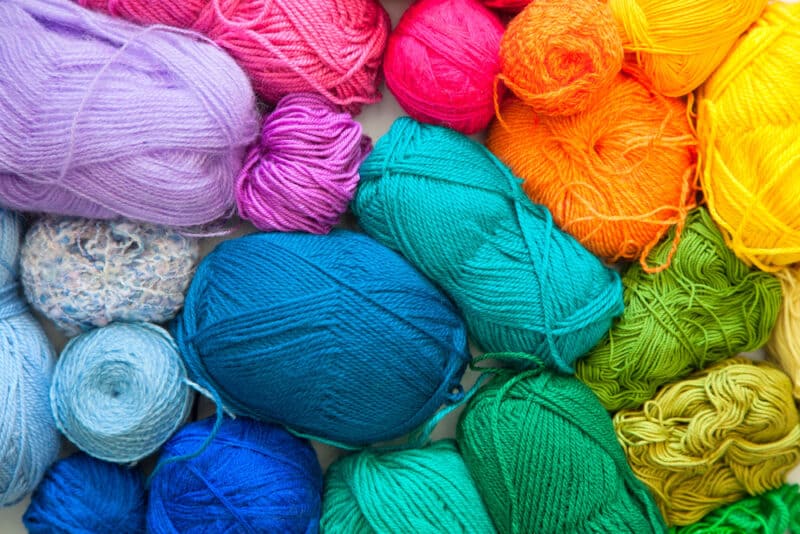
The right yarn is essential for making tight, neat stitches, so you must be thoughtful when choosing which type to use. One of the most popular yarn sizes for amigurumi is three (also known as DK or light-worsted weight), as it’s easy to work with and usually affordable.
But, if you want to make a stuffed animal for a child, you might want to use super chunky yarn or cotton blends with a softer sensation. A heavier yarn weight will mean a sweeter, more cartoonish-looking design, and soft yarn will be much nicer to snuggle with.
You also need to be aware the colors when you’re selecting your amigurumi yarn. Look at your pattern requirements and how much you need of each color. Most patterns will give you the exact amount and weight of yarn for each section.
The requirements are usually listed as “one ball,” “one skein,” or the length in yards. Make sure to buy the right amount all at once because if you find yourself short and have to return to the store, you might get a different dye lot, and the colors won’t match.
2. Decorative Details

You will also need decorative details for your amigurumi, like eyes and embroidery thread to make the mouths, noses, clothing, or fingernails. These elements are necessary to give your toy the appearance of an animal or character.
You can stitch these details on, or you can use felt and a glue gun.
Felt is more versatile, and you can easily change designs by replacing the piece of felt. For example, you can use soft felt to make huge eyes that take over half of the face or add a cozy belly to your teddy bear.
If you want to add more details, you’ll also need some embroidery thread and fabric. As a beginner, you don’t need to worry about learning to sew or having a sewing machine. But it’s important that you understand how to make basic hand stitches:
At a minimum, hand stitching is required to close the opening at the bottom of your amigurumi. Otherwise, your beautiful toy will have a large hole in the bottom, and the plastic stuffing will fall out of it. But you can also hand-stitch on details.
Another option for decorating your amigurumi is to embroider details like flowers, hearts, or names onto the toy. To embroider, you’ll need a thread and a needle. You can quickly learn to embroider online as many tutorials give you the techniques to make embellishments.
If you want something simple, you can buy a bunch of colorful buttons in the shapes of butterflies, hearts, and other designs and sew them onto your project. Buttons look great on teddy bears or plushies when you use them as eyes.
There are no fixed rules for decorating your amigurumi, so get creative and try some new styles!
3. Stitch Markers and Hooks
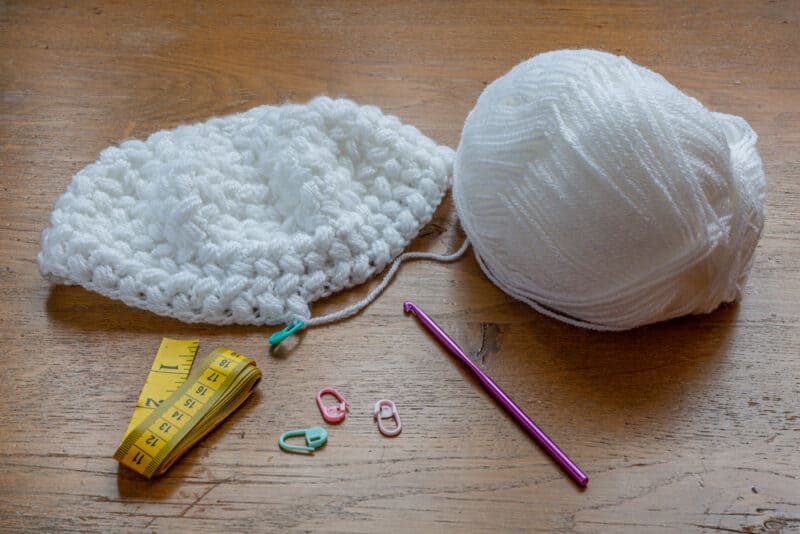
You can’t forget about your stitch markers when making amigurumi. These are vital for keeping count of your rows and ensuring that you don’t miss a step.
It’s easy to overlook a stitch when you’re just beginning, so buy yourself a pack of stitch markers.
It’s a good idea to keep a jar or bag of them near your crochet corner, as you can reach for one whenever you start a new section. If you want to recycle your yarn, you can use leftover strands of yarn as stitch markers.
This is a great way to use up your yarn stash and avoid buying new stitch markers.
The next thing to get organized is your crochet hooks. This is the tricky part of amigurumi that can either make or break your final design. Beginner amigurumi makers don’t always realize that the suggested hook on a yarn label is not the right hook for making toys.
To keep it simple, you should always use a hook size a few sizes smaller than the recommended size on the yarn label. Most yarn companies sell yarn for making garments and blankets, and they recommend larger hook sizes for these projects.
Amigurumi requires small, tight stitches, so you can’t use a large hook that will leave gaps. The bigger hooks are great for making clothes or decorative home items, but they won’t work for your amigurumi projects.
Ideally, you should use anything from G-6 and below when making amigurumi. Some people use the smallest size to make intricate miniature designs with lots of details. It’s up to you.
4. Toy Stuffing
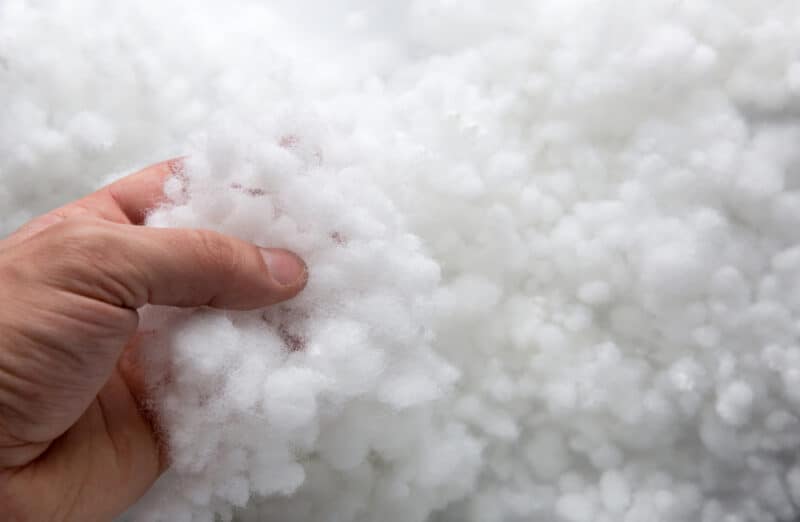
The last thing you’ll need before tackling your first amigurumi project is stuffing. You can find large bags of stuffing online, but you can also recycle materials at home or use leftover yarn.
Depending on how many projects you’re planning on making, you’ll need to come up with an estimate and gather enough stuffing. If you want to try amigurumi but are unsure if you want to make a big investerment, you can always use toilet paper.
Just know that it will compress and break down quickly.
Tips for Making Amigurumi
Now that we’ve covered the basic stitches requirements and items you’ll need to start, there are a few other tips worth noting as a beginner amigurmi maker.
Creating a magic circle is the hardest part of amigurumi, as you need to get the right stitches in the right places at the beginning, or your toy will be unbalanced and messy when it’s completed. Practice making magic circles until you feel comfortable with the technique.
Once you master the “magic circle,” you can feel confident approaching different patterns and design your own without a tutorial.
Always count your rows as you crochet! It can be tiring counting every row as you crochet, but it’s worthwhile when you don’t need to frog your entire project because the counting is off. Frogging means unraveling your stitches, and you want to avoid this!
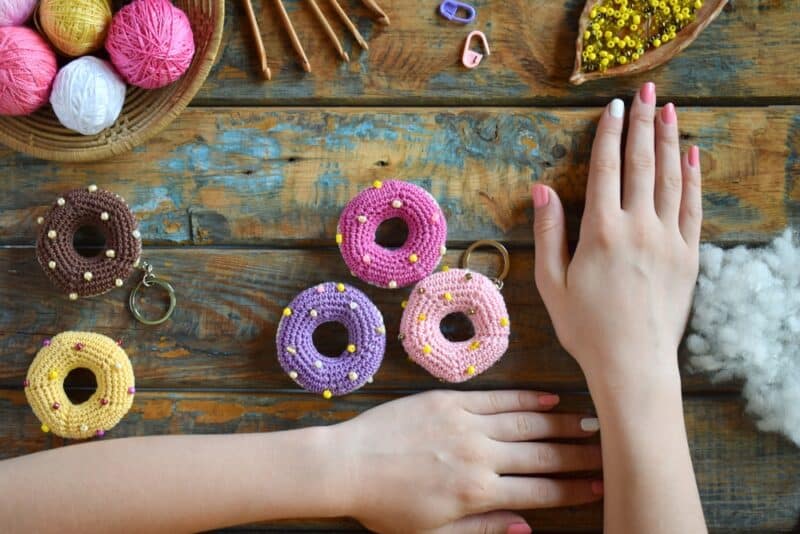
You need to be mindful of your stuffing as it’s easy to place too much filling into your toy. This can stretch the stitches and make the filling poke through the holes. The best way to control the stuffing is to fill the center but stop as soon as you start seeing the stitches get bigger.
It can take a while to figure out what works best and what you prefer for your amigurumi style. In the meantime, enjoy discovering the world of amigurumi and all the cuteness!
Just don’t forget to use a smaller hook, keep your stitch markers nearby, and practice as much as possible.
Now, grab a beginner stitch, or a whole book of them, along with your your supplies, and get started!
